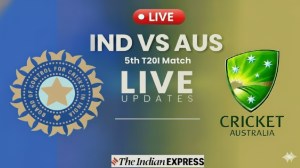Anatomy of a conspiracy
The urea scam was a well-planned conspiracy allegedly hatched by former prime minister P.V. Narasimha Rao's nephew Sanjeeva Rao, former Unio...

The urea scam was a well-planned conspiracy allegedly hatched by former prime minister P.V. Narasimha Rao’s nephew Sanjeeva Rao, former Union Chemicals and Fertilizers Minister Ram Lakhan Singh Yadav’s son Prakash Chandra Yadav and Hyderabad-based businessman Sambasiva Rao to defraud the National Fertilizer Limited (NFL) of $38 million.
According to the chargesheet filed by the CBI in the court, the other alleged players in the Rs 133-crore scam — National Fertilizer Limited (NFL) executives C.K. Ramakrishnan and D.S. Kanwar, Karsan officials Tunkay Alankus and Cihan Karanci, Brazilian businessman A.E. Pinto and Mallesham Goud — were lured by offers of huge kickbacks.
The conspiracy began soon after the NFL was made a co-canalising agency for the import of urea on behalf of the Department of Fertilizers in October, 1994. “Investigation has disclosed that during February, 1995, a meeting was held at Hyderabad by Sanjeeva Rao, Sambasiva Rao and Mallesham Goud to obtain contracts from government agencies on behalf of foreign suppliers for import of urea and to get unreasonable commissions for themselves,” the chargesheet says.
Around mid-1995, Sanjeeva Rao came to Delhi along with Sambasiva Rao and Goud and introduced Sambasiva Rao to NFL Managing Director C.K.
Ramakrishnan. After the meeting, the NFL gave Sambasiva Rao orders for import of urea on behalf of three international trading companies, Amartek International of USA, Intertrade of Denmark and Bulsigma of Bulgaria. None of the deals, however, came through.
The CBI chargesheet alleges that Prakash Chandra Yadav abetted Sambasiva Rao and Kanwar in the “completion of this fraud.” He “allured” Kanwar to get an extension of his service period. Yadav, who was then residing with his father, Ram Lakhan Singh Yadav (then the Chemicals and Fertilizers Minister) was always kept informed of the developments in the deal by Sambasiva Rao either personally or on telephone.
After the earlier deals fell through, Sambasiva Rao got in touch with his associate, Brazilian businessman A.E. Pinto (who was known to Karsan officials Tunkay Alankus and Cihan Karanci), and summoned him to Delhi in July, 1995. He was asked to bring along a contract offer from Karsan for the supply of 200,000 tonne of urea at a rate of $190 per tonne, that is equivalent to Rs 133 crore.
This contract was “unauthorisedly” signed on July 27, 1995 by D.S. Kanwar (Executive Director of NFL) and A.E. Pinto on behalf of the NFL with Tunkay Alankus of Karsan without informing the NFL board. This, the chargesheet says, was in complete violation of the rules and procedures which clearly stated that no contract could be signed on the basis of a “single offer”.The deal was, however, abruptly scrapped as the NFL’s bankers (State Bank of India, South Extension, New Delhi) refused to issue a letter of confirmation to Karsan stating that it had received Rs 133 crore from the NFL. The accused officials, says the chargesheet, then removed the related papers from NFL records to destroy evidence. Karsan then made another offer to the NFL through Pinto and Sambasiva Rao. This time, it demanded 100-per cent cash pre-payment from the company and promised to furnish a Lloyds insurance policy covering risks for non-performance and non-delivery of urea. The second offer from Karsan was approved by Kanwar and Ramakrishnan on October 31, 1995, in violation of all standing rules, and the deal signed on November 11, 1995 when Alankus and Caranci came to Delhi.
Karsan did not furnish the Lloyds insurance cover or a bank guarantee when signing the contract and instead submitted an insurance cover note of NHK Marine, London, stating that it would cover the risk on non-performance and non-delivery. NFL executives overlooked this basic requirement and went ahead with the deal.
CBI investigations later revealed that Karsan had falsely claimed it was a manufacturer of urea as this was one of the conditions of the contract norms. It was also revealed that the insurance cover note given by Karsan was “spurious” as it only covered the risks of marine peril and not risks of non-delivery. What is perhaps most interesting is the revelation that a bank in Geneva (Banque Indo-Suez, Suisse), where the $ 38 million was sent by the NFL in favour of Karsan, returned the amount as it was not satisfied with the genuineness of the deal. The first vice-president of the bank, Bruno Charuel, made inquiries from NHK Marine London, only to discover that the insurance note was false. This, along with other related inquiries, made the bank suspicious of the deal. The bank refused to release NFL funds to Karsan and returned them to the SBI Overseas Branch in New Delhi on November 24, 1995.
In a fax sent to Kanwar the same day, Karsan, however, claimed that the Swiss bank was asking for unreasonable commission and that is why they had asked it to return the money to the SBI. The fax also asked Kanwar to send the $38 million to their account with the Pictet Bank in Geneva this time.
Sambasiva Rao also sent a fax to Kanwar around the same time informing him of the developments. The amount was sent to the Karsan account in Pictet Bank on November 29, 1995 by the SBI on the instructions of Kanwar and Ramakrishanan.
On receiving the money in his account, Alankus immediately set about distributing it to the various accused in the scam (see box). The CBI has so far been able to trace only a little over $7 million of the total amount. This money was lying in Alankus’s Pictet Bank account when it was frozen in 1996 on the request of the CBI. The issue of its repatriation to India is at present pending before Swiss courts. Another $6 million has also been traced to Karsan accounts in Almaty in Kazakhistan.
The CBI has brought the two Karsan officials to India for trial. They are at present in judicial custody in Tihar jail after they were extradited by Switzerland. Another accused, A.E. Pinto, is in jail in London after he was nabbed by the Scotland Yard earlier this month. The issue of his extradition to India for trial is to come up before a London court next month.Who got what
(The break-up of kickbacks according to the CBI chargesheet)



- 01
- 02
- 03
- 04
- 05



























